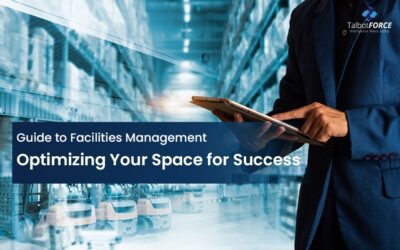Guide To Facilities Management Optimizing Your Space for Success
In the modern business landscape, the effective management of facilities is pivotal in ensuring operational efficiency, sustainability, and overall success. From commercial buildings to industrial complexes, healthcare facilities to educational institutions, the scope and diversity of facilities management are vast and multifaceted.
Types of Facilities Management
Understanding the different types of facilities management is essential for organizations aiming to optimize their resources and enhance their infrastructure capabilities. Let’s delve into various types of facilities management, exploring their characteristics, functions, and significance in today’s dynamic environment.
1. Commercial Facilities Management
Commercial facilities management primarily focuses on managing facilities within the commercial sector, including office buildings, retail spaces, and mixed-use developments. Its key objectives revolve around maintaining a conducive environment for businesses to operate efficiently. This includes overseeing various aspects such as building maintenance, security, janitorial services, and tenant relations. Commercial facilities managers often collaborate with stakeholders to implement sustainable practices and enhance the overall occupant experience.
2. Industrial Facilities Management
Optimization of industrial facilities is designed to meet the distinct needs of manufacturing sites, storage warehouses, and logistics hubs. This comprehensive approach covers everything from the upkeep of machinery, enhancing production flows, and ensuring safety standards, to overseeing the logistics network. With the pivotal position of industrial sites in the manufacturing ecosystem, adept management is crucial for bolstering efficiency, reducing interruptions, and mitigating operational hazards.
3. Healthcare Facilities Management
Healthcare facilities management is dedicated to supporting the operational needs of hospitals, clinics, and medical centers. Beyond traditional facility maintenance, healthcare facility managers must navigate stringent regulatory standards, infection control protocols, and patient safety measures. They are tasked with ensuring that healthcare environments are hygienic, accessible, and equipped to deliver high-quality care to patients. Moreover, with the rising emphasis on healthcare technology and infrastructure resilience, facilities managers play a crucial role in integrating innovative solutions and adapting to evolving healthcare trends.
4. Educational Facilities Management
Educational facilities management revolves around managing schools, universities, and other educational institutions. This includes maintaining classrooms, laboratories, libraries, and recreational areas to foster an optimal learning environment. Educational facilities managers are responsible for addressing the diverse needs of students, faculty, and staff while adhering to budgetary constraints and regulatory requirements. Furthermore, they play a key role in implementing sustainable practices and leveraging technology to support educational goals and enhance campus experiences.
5. Hospitality Facilities Management
Hospitality facilities management encompasses hotels, resorts, restaurants, and entertainment venues, aiming to deliver exceptional guest experiences while optimizing operational efficiency. In addition to maintaining physical assets, such as guest rooms, dining facilities, and recreational amenities, hospitality facilities managers focus on guest satisfaction, brand consistency, and revenue generation. By leveraging data analytics and guest feedback, they strive to anticipate and address evolving preferences and market trends, thereby driving competitiveness and profitability in the hospitality industry.
6. Government Facilities Management
Government facilities management involves managing public infrastructure, administrative buildings, and civic amenities to meet the needs of citizens and government agencies. This includes ensuring compliance with regulatory standards, enhancing energy efficiency, and safeguarding critical assets. Government facilities managers collaborate with various stakeholders to prioritize infrastructure investments, address community needs, and promote sustainability and resilience in public service delivery.
From commercial enterprises to public institutions, the effective management of facilities is crucial for achieving organizational objectives and meeting stakeholder expectations. By recognizing the diverse types of facilities management and their unique challenges and opportunities, organizations can develop tailored strategies to optimize resources, enhance operational resilience, and create environments conducive to productivity, innovation, and well-being. With the ever-changing landscape of facilities management, maintaining awareness and adeptness is essential for handling challenges and propelling sustainable advancement in the infrastructure industry.
